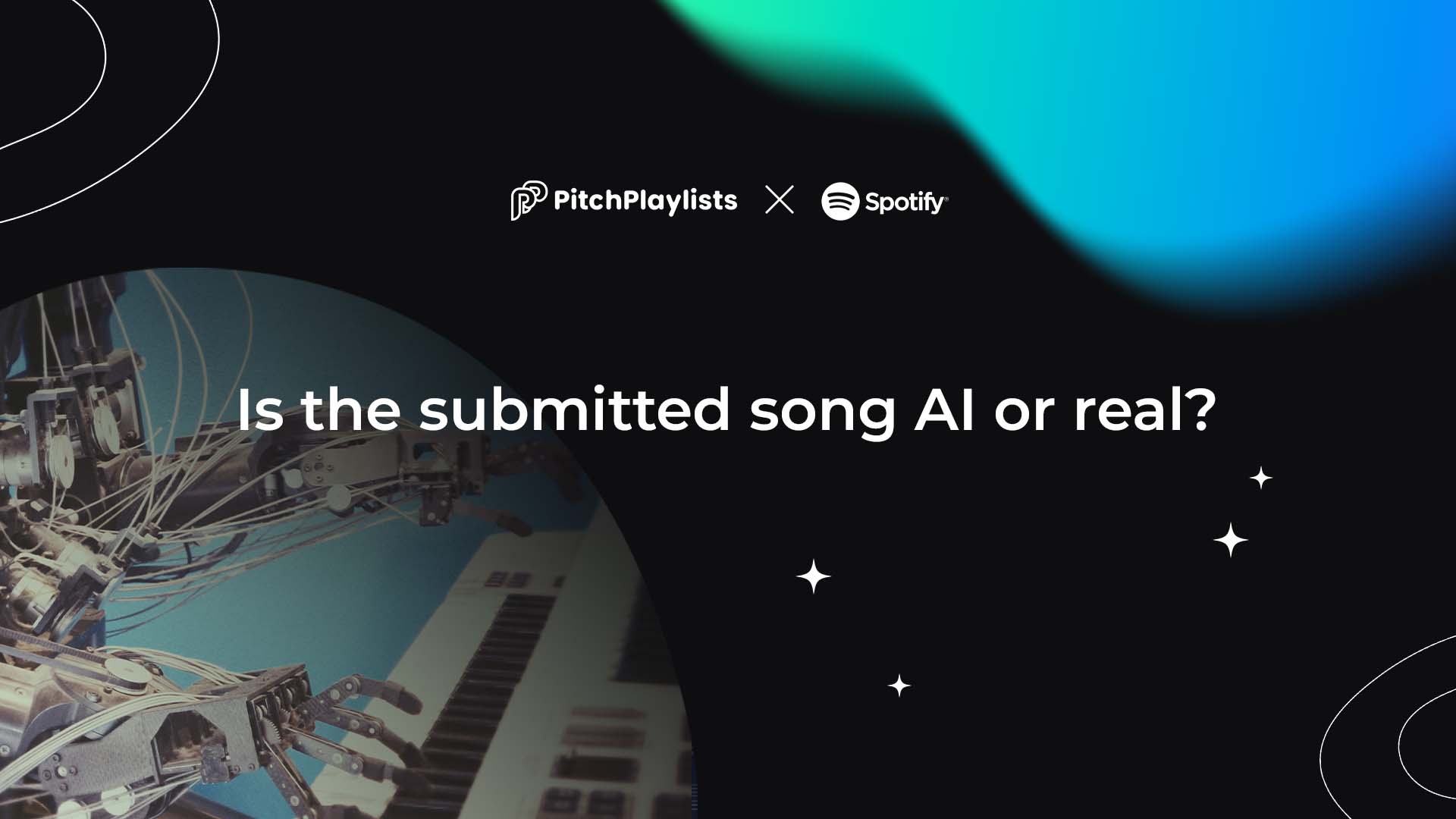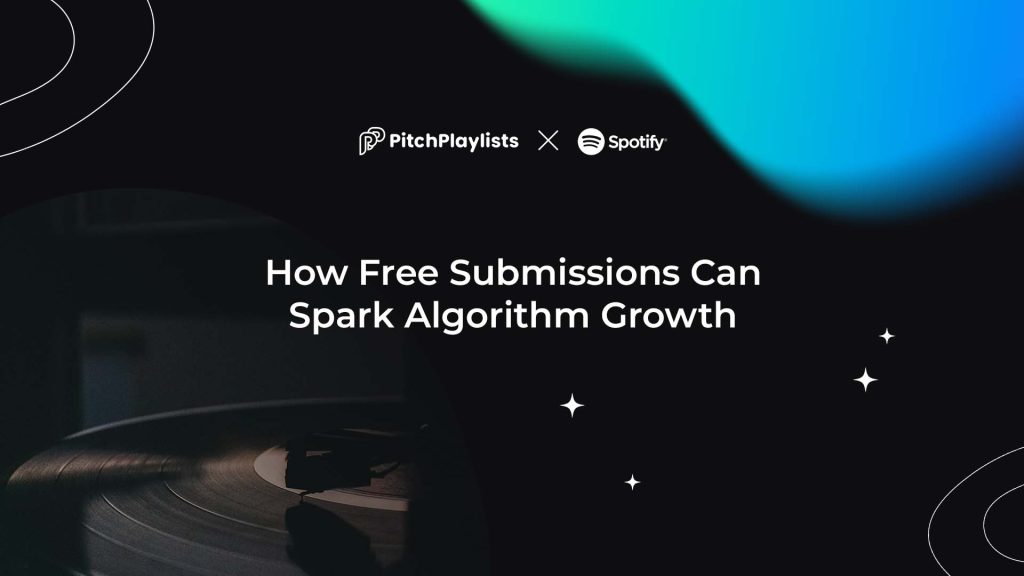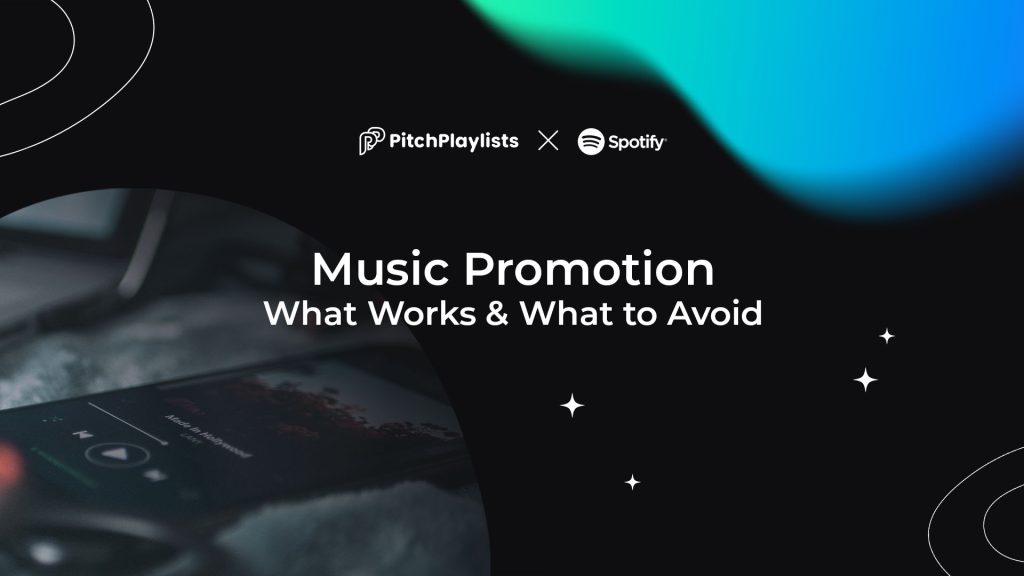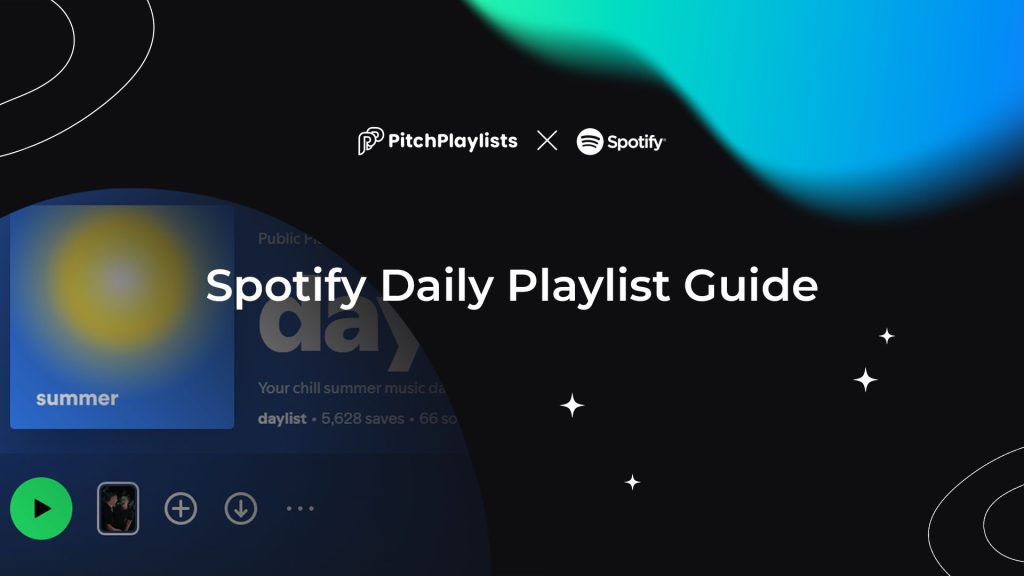
Contents
Want to share song?
Share your first track with playlists - curators are ready to check it out!
Let`s go!Contents
The music industry is changing fast, and one of the biggest shifts we’re seeing is the rise of AI-generated songs. While technology always plays a role in music production, we’re now at a point where entire songs – vocals, lyrics, melodies, even fake artists are being created by artificial intelligence.
This matters a lot for artists who submit music to Spotify playlist curators through platforms like Pitchplaylists. Because lately, curators aren’t just getting real, human-made music anymore. They’re also receiving AI songs, submitted by so-called “fake artists,” trying to blend in with the crowd.
Let’s break down why this is a problem, how to spot it, and what curators and real musicians should do about it.
It All Looks Normal… Until You Dig Deeper
At first glance, songs created by AI artists can look just like any other release. They have cool cover art, catchy titles, and show up on the same platforms as everyone else: Spotify, Apple Music, Amazon Music, YouTube Music, you name it.
They often rack up impressive streaming numbers and even appear in official-looking playlists. On the surface, everything seems professional and legitimate.
But here’s the catch: many of these artists aren’t real.
Their voices? AI-generated.
Their faces? AI-created.
Their songs? Built using advanced tools like Udio or Suno, with lyrics typed in by a human and turned into fully-produced tracks within minutes.
To give you an example of what a clearly AI-generated profile looks like, you can take a closer look at this track:
This is becoming more and more common. Curators reviewing submissions to submit music to Spotify playlist services are increasingly flooded with these AI-generated songs, often submitted under fake names with no actual artist behind them.
The Real Cost: Less Space for Real Artists
When fake, AI-generated songs flood playlists, it becomes harder for real artists to get heard.
Let’s say you’re an independent singer-songwriter and you submit music to Spotify playlist curators, hoping for a chance to be discovered. But now, your song is sitting in a long queue next to AI-created tracks that were pumped out in seconds. The playlist might get filled with slick-sounding but soulless music that wasn’t made with heart, experience, or personal story.
Worse yet, these AI songs often perform well. They follow trends, use polished production, and are optimized to grab algorithmic attention. But they lack authenticity. And every time an AI song gets picked over a real one, a real artist loses visibility and opportunity.
The Hard Part: It’s Tough to Tell What’s Real
From a technology standpoint, it’s actually very hard to build a system that automatically detects and filters out AI-generated music. These songs are often mixed and mastered to sound professional. AI vocals have gotten so advanced that they can mimic emotion, vibrato, and even stylistic quirks.
So curators reviewing tracks when people submit music to Spotify playlist services may not always know what they’re listening to. And AI creators are only getting better at hiding the signs, using fake press kits, made-up bios, AI-generated photos, and even fake social media profiles to pass for real.
Sometimes, the only way to tell is by going deep: checking metadata, reverse-searching images, digging into social profiles.
Some Key Red Flags to Spot AI-Generated Music
If you’re a curator (or artist curious about your competition), here are a few tips to help you spot potential AI music in submissions:
- Too many releases, too fast – AI artists can drop dozens of songs in a few months. Real artists rarely do this.
- No real social media interaction – You’ll find profiles, but no human touch. No live videos, no real footage or even comments.
- AI-looking photos – Faces that look too perfect, or slightly off (weird fingers, blurry eyes) Tip: Zoom in on the photo, and you might notice something that makes you feel it’s not real.
- Vocal inconsistencies – AI vocals often lack breath, sound slightly robotic, or feel emotionally flat and compressed.
- Odd song titles or awkward lyrics – Sometimes, lyrics feel formulaic or “too clean.”
These red flags aren’t always obvious, which is why human curators still play a vital role in preserving quality and authenticity when artists submit music to Spotify playlists.
A Note for Reviewers: Capture the Essence, Human or Not
Whether you’re for or against AI-generated music, when reviewing songs on Pitchplaylists, the goal is the same: capture the essence of what you hear. Highlight the emotional tone, production quality, vocal authenticity, and overall vibe, whether it’s human-made, AI-assisted, or fully synthetic.
That’s why it’s so important that curators take a moment to really listen and try to capture the essence of the song when reviewing music submitted through Pitchplaylists. Even though you’re not writing feedback, your approval or rejection helps shape the visibility of real artists. If you suspect a song is AI-generated, it’s okay but always base your decision on how the music fits your playlist and if it genuinely connects, not just how it was made.
Being aware of AI music doesn’t mean every synthetic song is bad. It just means you need to know what you’re reviewing when people submit music to Spotify playlist selections. That awareness helps maintain fairness for real, hardworking artists.
Why Fake Artists Keep Winning
You might be wondering: if AI artists are fake, why are they succeeding?
The answer is simple: they play the system. And the system, so far, allows it.
Spotify and other platforms don’t have strong rules against AI-made songs (yet). And tools like Suno and Udio make it incredibly easy for anyone to make music fast. A person with no singing talent or musical background can create a full song, generate a fake persona, and submit music to Spotify playlist outlets in under a day.
On top of that, these fake artists never get tired, never face writer’s block, and never take breaks. They can flood platforms with hundreds of songs, outpacing human artists who spend months perfecting one track.
Fake artists use this method to make easy money from streaming platforms, which hurts real artists’ potential income. The more AI-generated fake artists flood the market, the harder it becomes for real artists to earn due to increased competition. That’s why streaming platforms sometimes increase their premium membership prices, real artists refuse to accept low earnings from their hard work, and some major artists might even pull their catalogs from these platforms, which could eventually harm the entire streaming service.
What Real Artists Can Do
If you’re a genuine musician, this might all sound discouraging. But here’s what you can do:
- Focus on your story – You are a real person with a real experience. That matters more than ever.
- Show your face – Behind-the-scenes videos, studio footage, live clips, anything to prove you’re real.
- Connect with fans – AI artists don’t talk to fans, don’t do interviews, don’t play shows. You do.
- Support transparency – Push for platforms to label AI-generated songs and offer clear distinction between real and synthetic artists.
The Bottom Line
There’s no stopping AI in music, it’s already here, and it’s growing fast. But that doesn’t mean we can’t protect space for real artists.
If you’re submitting your work, keep creating with heart. And if you’re a curator or playlist reviewer, make sure you know what’s in front of you before you give feedback or offer support. It’s more important than ever to review each submission with care and awareness.
Every time someone submit music to Spotify playlist, it should be a chance for a human voice to be heard, not buried under a wave of machine-made content.
Let’s make sure the future of music includes the people who live and breathe it.
Want to share song?
Share your first track with playlists - curators are ready to check it out!
Let`s go!



